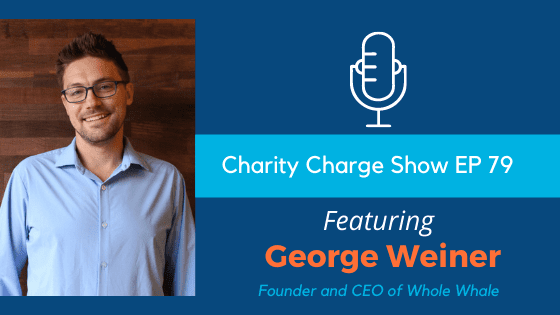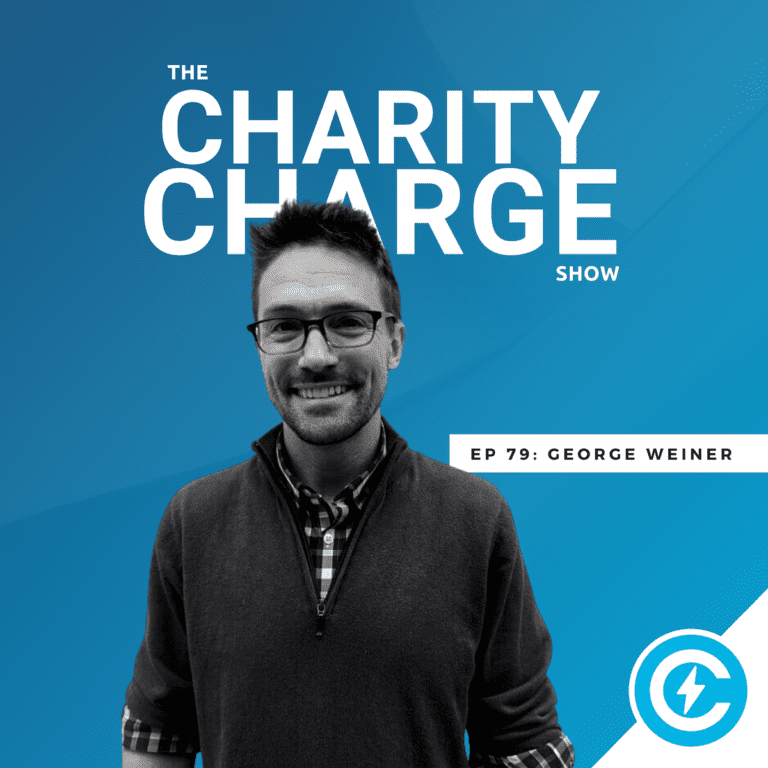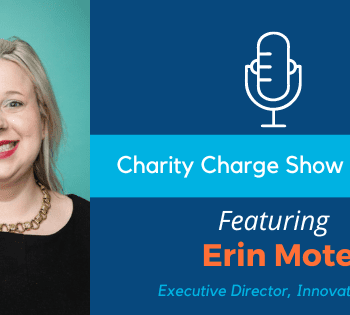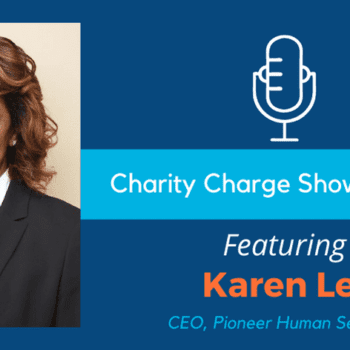In Episode 79 of the Charity Charge Show, Stephen talks to George Weiner, Founder and CEO (or Chief Whaler) of Whole Whale, a digital agency that leverages data and tech to increase the impact of nonprofits and for-benefit companies.
George and Stephen discuss digital advertising and its benefits for nonprofits, plus the 2021 Nonprofit Advertising Benchmark Study.
Interested in listening to the full episode and hearing more from other nonprofits? Check out more episodes.
Prior to Whole Whale, George was the CTO of DoSomething.org. Over the course of 7 years, he managed the platform overhaul of DoSomething.org twice (winning a Webby Award) and helped to build a community of over 1.5 million young people taking action.
Realizing that much of DoSomething’s success was owed to smart, lean use of many democratized tech tools (including Google Analytics and the Google Ad Grant), George founded Whole Whale with the goal of helping nonprofits both storied and start-up to move their missions forward with the tools at hand.
He is also the co-founder of Power Poetry, the largest teen poetry platform in the U.S, a safe, creative, free home to over 500k poets.
George Weiner, Founder and CEO of Whole Whale, on the question of spending money on digital ads:
The question is, should we spend on ads? Very simply, there’s the Google Ad Grant. If you haven’t heard of this before, by all means, take advantage of the Google Ad Grant. The Google Ad Grant is $10,000 in search ads per month, use it or lose it.
There are other caps on it, such as a max bid of $2, and a number of other things. We’ve got an online course dedicated to helping people go from zero to 60, and free resources as well on figuring out the Google Ad grant. If you are an educational institution, you don’t qualify; if you’re a hospital, you don’t qualify.
There are certain caveats like that. But for most nonprofits, this is a great way to sort of get additional awareness around keywords and topics, not just “hey, donate to us,” which actually won’t drive that much traffic.
Let’s say you’re trying to reach parents, say you’re trying to reach teachers, say you’re trying to spread awareness about a certain cause or disease.
This is a great sort of arrow in the quiver and a way to bring in and build extra attention for your organization. You know, use it as you will. Google Ad Grant – super powerful. I say there’s a diminishing return to scale.
So if you have dollar signs flashing in your eyes being like, “Oh, my gosh, we can get $10,000 and put it into our bank account!” That’s not how it works. Again, it’s just an ad credit, you run it. Probably most organizations won’t be able to spend nearly half of it. But it’s something more than nothing.
I think it’s incumbent upon a fundraising team or communications team to try this. Because, by the way, building that audience is valuable. And when I say audience, I mean the people that give you their email.
And so when you can exchange money for those relationships, and then those relationships have a certain percent conversion rate, you have an economic formula that can be repeated.
I just want more organizations that take a shot on goal and stop just giving away free content on social media. I want them to just say, “Hey, if you were spending time, you’re spending money already.” You should be working more strategically because Facebook for nonprofits is not a social media platform. It’s advertising platform. And it’s a very good one.






